John R. Fultz's Blog, page 44
March 17, 2023
Dog tearing toilet paper – What to do?
Dog tearing toilet paper is a common attitude. If your dog has this type of attitude, know that there are problems to be solved in the animal’s daily life. However, what problems are these? How to make the dog stop chewing and tearing the paper? That’s exactly what you will learn in this text. So follow along and find out.
Dog ripping toilet paperIf your dog is tearing up toilet paper, it is of paramount importance that you take steps to correct it. But, how to do this without upsetting the animal and making the situation worse? There is no magic recipe or step-by-step solution to solve it overnight. However, there are some methods you can apply in the long run. Thus, it will be possible to see the changes and, consequently, provide more quality of life for the animal.
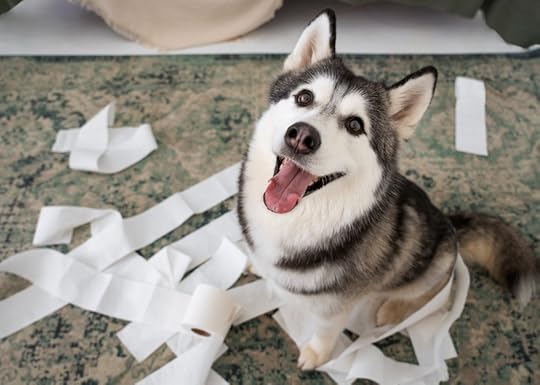
Well, when a dog is tearing up paper, know that he doesn’t do it because he loves to do it. He does it for other reasons linked to routine and experiences. We explain below.
Why do dogs like to tear up paper?A dog tearing up toilet paper is not just a result of a stuck routine. But it is also a reflection of energy accumulation. That is, your dog is possibly channeling the accumulated energy to destroy the paper. And not just toilet paper. Other roles will also be welcome in this situation. After all, the dog’s will is not to tear the paper effectively. He’s in expending energy and curing anxiety in some way.
Yes, dogs are anxious if they don’t engage in activities that make them expend energy. And one of the ways to notice this is precisely in situations where they need to spend the accumulated energy. Tearing paper is just one of these alternatives. Because the dog can also chew furniture and even doors! But what can you do to make a dog full of energy feel more fulfilled? Follow along.
Dog tearing up toilet paper – Tips to improve behaviorFrom now on, we’re going to list some important tips for you to put into practice. Remember that every dog is unique. That is, not necessarily the problem will be solved like magic. It’s important to understand canine behavior so that you can adapt best practices to your dog’s routine. Understand a little more.
Patience above allFirst of all, you need patience. They are still just dogs wanting to have fun and spend their energy on something. If you start any kind of treatment or training procedures to improve, take it easy. At some point the dog will understand what he can and what he cannot. Never use violence or rudeness!
Make the dog spend energy above all elseAs we mentioned during the text, the dog needs to expend energy. Go for walks, take him to the park, play in the backyard, leave toys nearby, offer new toys to get out of the routine, etc. These situations will decrease the animal’s anxiety and make him feel more fulfilled.
Keep toilet paper awayFinally, you can try to keep the toilet paper out of your pet’s reach. This situation is not the best, because as we mentioned, the dog will find another alternative to expend energy. He may start chewing on furniture and even the door. However, it is an interesting step if worked together with the previous ones. This way you will be acting on the problem and also acting on the prevention of what is causing this problem.
This type of procedure takes time. A dog takes time to assimilate what he needs and what he can and cannot do. Especially if he’s already an adult. So he goes slowly, take it easy and give it time. Good luck!
The post Dog tearing toilet paper – What to do? appeared first on John's Blog.
Dog gets stuck on the sidewalk – What to do?
Does your dog brake on the walk ? If so, in this article we will help you with this problem. Anyone who is adopting a dog now and has tried to go for a walk with him, knows how sad it is when he doesn’t want to walk. This is one of the most common actions a dog that has never walked anywhere can do. It’s natural and instinctive. However, some care is needed so that the problem does not last forever. Follow along.
Dog hangs on the sidewalkIf your dog gets stuck on the walk, something is wrong. Not that this isn’t an uncommon attitude. On the contrary: it is so common that it can be considered normal by most people. However, the fact is that some care and measures need to be taken, so that the problem is corrected and not extended.
This is a mixture of sensations that affects the dog. Especially if he’s a puppy and especially if he never left home (or almost never). The street is not always the most comfortable place for a dog. They are extremely homely and feel like they belong somewhere. And this is part of the instinct. However, tours are necessary for a number of situations. Including to prevent obesity in dogs .
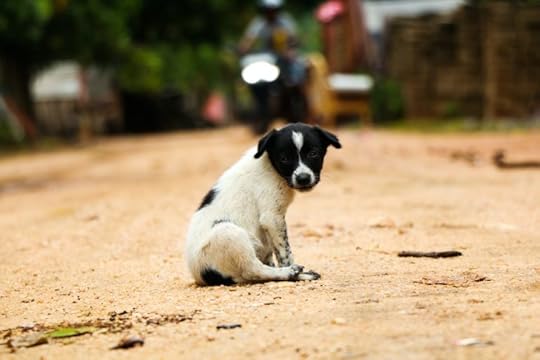
But, how to build a healthy and long-term relationship in this sense, if the dog hates going out? Keep reading to understand and seek the solution.
Understand what your dog is feelingWhen a dog stalls on the sidewalk, above all, he’s trying to say something. No type of action is done for free. I mean, there’s always a reason. And in this case it would be no different. Therefore, before applying any dog training activity, practice or technique, it is important to understand what is happening.
No kind of problem can be solved if the source is not identified. Covering the sun with a sieve will never solve anything and can make the situation worse. Therefore, you will need to do a kind of empathy exercise. Put yourself in the shoes of the dog that is stopping on the walk and try to understand the motivation of that.
It’s not easy, because it can be what you least imagine. However, this is usually linked to fear and feelings of insecurity on the part of the animal. This fear can be caused by a number of things. Follow along to understand better.
Look for elements that can make it crashAs we mentioned earlier, it is of paramount importance that you identify what may be causing your dog to freeze during walks. Remember that if you don’t discover the real motivation of a problem, you will never discover how to actually solve it.
And it’s also worth remembering that solving the problem doesn’t mean the dog will stop braking overnight. Don’t think that, because you may be discouraged on the first try. Dogs are animals. They need time for any adaptation, as they do not rationally understand what is happening around them. So look for some paths that may be causing the dog to brake during walks. See below.
Excessive movementIf your dog is a puppy or even if he’s an adult who doesn’t get out much, too much movement can leave him paralyzed. Remember that a dog used to an environment will hardly give in quickly to a new environment. This is even valid when we take the dog to live in another place, due to a change of city, for example.
Therefore, excessive movement on the street can make the dog scared. A lot of noise, a lot of cars and a lot of people around him at the same time, can be factors that motivate the dog to brake on the walk. Make an observation and try to understand at what specific moment he stops walking. And so you will have a more focused targeting for treatment.
Weird peopleExcessive movement comes against this situation: strange people. A dog is a bodyguard and often feels that he is protecting his owner’s home. You may have noticed a dog stressed with a neighbor or even people on the street, right? However, this is often the case for the security of the home enclosure.
From the moment the dog feels intimidated by the excess of strange people (whom he has never seen in his life), he can stop and not follow the walk. This is a feeling of fear of the unknown and insecurity. It’s normal, but it needs to be studied to find a solution.
Presence of other dogsIn addition to strange people (unknown), the presence of other dogs on the walk can be the justification for the dog to brake. This is why the observation exercise is so important. Because in this case, you will easily notice your dog’s dissatisfaction from the moment you meet other dogs on the street.
Often encounters can be harmless. That is, the dog meeting new friends may not mean a fight over territory. However, sometimes just the opposite can happen: excessive fear. And this is not healthy either, as the dog needs to socialize with other dogs. Of course, in a way accompanied by the tutor, to keep the animal’s health and energy up to date.
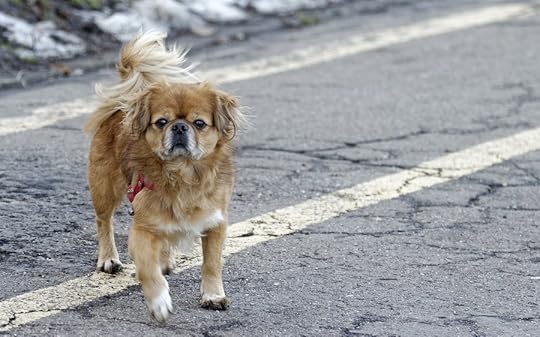
In general, the insecurity that a newly arrived dog on the street feels is very great. It boils down to a series of fears and suspicions. As we mentioned earlier, the dog is very considerate of where he belongs. And when he starts noticing everyone around him (even without posing any risk), he feels out of place.
Very large and open environments, such as large avenues in big cities, for example, can be a factor in these fears. The feeling of lack of comfort and knowledge of the territory plagues some dogs that are in a wider field of vision than they are used to. This is normal and should be understood as a common reaction for a dog that comes from a closed home.
What to do?There are some activities you can do to improve. Follow along.
Do not reinforce the fear he is feelingIf the dog brakes on the walk, it is for a reason, as we have already understood. Once you’ve realized the possible sensations the dog is feeling through observation, it’s time to put some ideas into practice to improve the problem. This does not mean that the dog will leave peacefully after these processes. But it can help a lot.
The first step is not to reinforce fear in the animal. How do you reinforce fear? Let’s exemplify to make understanding easier. Imagine that your dog is at home and hears fireworks. We know that this practice leaves animals extremely scared, even at home, don’t we? In this way, he will look for a place to hide.
What you need to do is let him hide, but don’t reinforce his motivation to do so. That is, don’t pet the dog or show too much support. This way he will condition, over time, that fireworks are harmful to him and he will always hide, because he will know that you will help him.
In the case of fears of going out on the street, it is the same situation. If you go to help your dog, caress him and show great affection at this moment, he will increasingly condition himself to an extreme state of fear. This also doesn’t mean you should abandon it! On the contrary, always be with him. But do not reinforce the fear, as it will be more difficult to remove in the future.
Be your dog’s leaderAnother very important factor in trying to improve the dog’s situation is to demonstrate leadership. Be your dog’s leader . This is one of the (few) ways to make him trust you on the street. After all, they need to feel that nothing bad can happen. And this the one who must demonstrate, in animal instinct, is the leader of the pack. In case you.
In order for you to be your dog’s leader, you must make him feel confident to continue. Proper training can help the process, as the dog will understand that he can trust you.
Use the mother carrying technique
Do you know the mother carrying technique? If the dog gets stuck on the walk, it can be extremely useful to reverse the situation. This technique consists of lifting the animal by the skin behind its neck, simulating that its mother is carrying it. They will feel safe with this attitude and will be able to move forward little by little. You will be able to take it for a few meters when you stop due to the crash.
It is not certain that they will continue walking alone at the exact moment, but they will feel the sense of leadership that we mentioned earlier. And this can be very useful in the medium and long term.
Be patient and don’t give up
If the dog gets stuck on the walk, there is no doubt that he is scared or insecure. We humans also feel a series of sensations like this. And we can’t always heal overnight. The same goes for dogs. You must be patient and not give up on the process. Always seek results in the medium and long term and good luck!
The post Dog gets stuck on the sidewalk – What to do? appeared first on John's Blog.
Caring for your pet during the winter
Many tutors think that the coat is enough to protect their pets in winter, but the truth is that, to take care of animals at this time of year, you need to pay attention to some special tasks. You might not think so, but animals feel cold and get sick, just like humans.
Of course, some are more resistant to the cold, such as the Siberian husky and the Saint Bernard. Despite this, here in Pak, the most popular dogs and cats are those that adapt to the mild temperatures of the tropical country.
With that in mind, we’ve listed the main winter precautions you should follow to protect your pet from the cold and prevent it from getting sick. Check out!
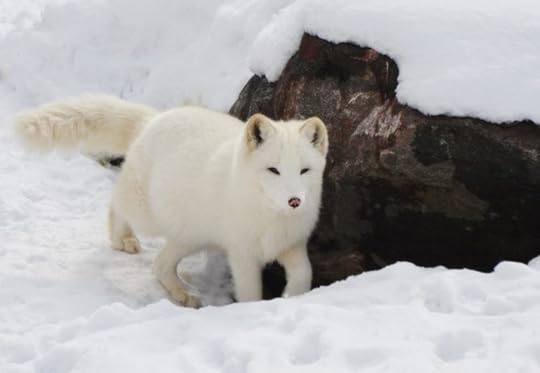
On cold days, our tendency is to stay under the covers and rest. But it’s important that your pet stays active, to avoid overweight, spend accumulated energy and reduce stress .
To make the activity more enjoyable, take the walks outdoors at times when the temperature is higher. You can also stimulate your pet without leaving home: games like hide-and-seek and hunting for food can be done in the backyard and are welcome.
Offer a healthy and balanced dietTaking care of animals also means taking care of nutrition. In the case of cats and dogs, it is necessary to offer a food rich in fibers, proteins and vitamins , according to their energy needs. Puppy and young animals need more energy at meals than older ones. Therefore, it is important to follow the food portions recommended by your veterinarian.
Hydration is also important: many pets consume less water than they should and, in winter, this habit tends to get worse. To change the scenery, try to leave water fountains spread over more rooms in the house. For those who have felines, the best tip is to invest in automatic fountains, so that the pet always has access to fresh, clean water.
Dry him well after bathingAnyone who has a cat knows that felines spend a good part of the day taking care of their own cleanliness, so bathing is only necessary in atypical cases, such as when the feline goes through dirty places or has contact with something sticky.
As for dog tutors, the scenario changes and baths have to happen with the same frequency at all times of the year. To prevent the dog from getting sick due to the low temperature, it is necessary that, after bathing, drying is complete.
In addition to damp hair reducing the thermal sensation, moisture in the body leaves the animal more exposed to micro-organisms and susceptible to dermatological problems. So make sure he’s dry after bathing, even if the process takes time. Be patient and ensure your pet’s well-being.
Keep it warmCats and dogs feel cold, that’s a fact. To make winter days more enjoyable, you need to make sure they have access to a warm and comfortable environment at all times.
Just like humans, animals look for warmer places at that time. Therefore, blankets and beds become practically indispensable. If you notice that your pet is curling up or curling up on its own body when resting, know that it is trying to warm up. When this happens, try to increase the temperature of the room, either with more covers or with a heater for dogs and cats.
Another alternative is to invest in clothing for animals: give preference to clothing that does not limit the pet’s movements and that do not have props that can be ingested. Slightly wider clothes are also welcome, so that the animal does not feel strange or trapped when wearing it.
If you don’t already have them, the above items are easily found in pet stores, both physical and online.
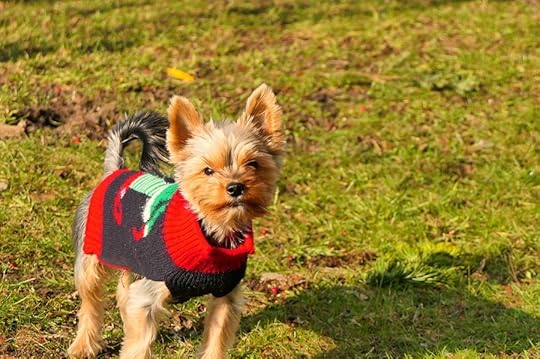
As we mentioned, the coat is one of the factors that contribute to keeping animals warm in winter, functioning as a natural barrier against the wind.
If your pet is furry, we recommend that the interval between grooming be longer at this time of year. However, it is worth noting that hygienic grooming and brushing must be kept up to date, to avoid the formation of knots in the hair and ensure that they adequately protect the animal’s skin.
Watch out for flu symptomsThe virus circulates all year round, but just like in humans, cases of animal flu also appear in greater numbers in winter.
Contrary to what many people think, the increase in occurrences is not related to low temperatures, but to the lower circulation of air in environments, as windows and doors tend to stay closed longer during the season.
If your pet attends hotels and schools for animals, it is good to contact a trusted veterinarian and find out about flu vaccines .
In dogs, canine flu can be detected by several symptoms, such as sneezing, excessive coughing, runny nose and fever (which can be alerted when the muzzle is hot and dry).
In felines, the main symptoms are the same. In addition to the flu, you should also be aware of signs of asthma and bronchitis, two common health problems in cats. Like the flu, they are more recurrent in the cold and their symptoms are: cough, loss of weight and appetite, difficulty breathing and lack of interest in routine activities, such as self-cleaning.
When noticing any behavior or symptoms mentioned above, go to a veterinary hospital as soon as possible and follow the medical recommendations for examinations and treatments.
The post Caring for your pet during the winter appeared first on John's Blog.
Best Dog Breeds for Seniors: What Are They? How to choose?
The company of a dog is perfect for people of any age, especially the elderly who have worked a lot and now have more time to rest and have their leisure time.
It is scientifically proven that pets bring many benefits to the physical, emotional and mental health of the elderly. Just as there are the best dog breeds for children, there are also the best dog breeds for seniors, see below what they are.
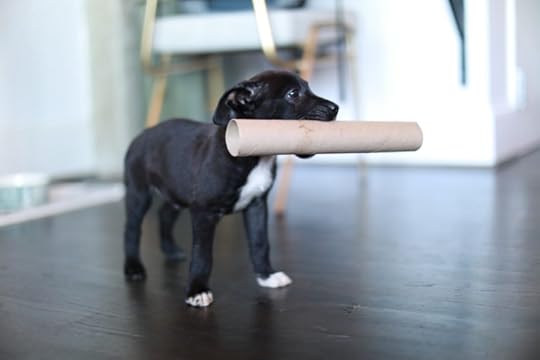
It is very important to assess the lifestyle of the elderly to choose the best breed of dog to keep them company. However, most of those involved agree that small pets are the best.
Overall, they are more companionable, friendly and docile. In addition, they like to go for light walks and do not mind spending more time indoors.
There are a variety of puppies with these specifications that can be great friends with people in their best age. Check out the top 5!
1 – Beagle

The same breed as Snoopy is successful among the elderly, as he is cute, faithful, sociable and likes to keep people company.
As he likes to play, this little dog is ideal for elderly people who exercise and like to walk in the streets and parks, in addition to playing. With this pet, days will be more fun and active.
2 – Chihuahua

One of the smallest and most personality-filled puppies out there. The great advantage of this breed is that it has a lifestyle that is adjustable to that of the family, even physical activities do not need to be intense.
The Chihuahua does not require special care, in addition to being very affectionate, they are true faithful friends and great companions.
3 – Shih Tzu
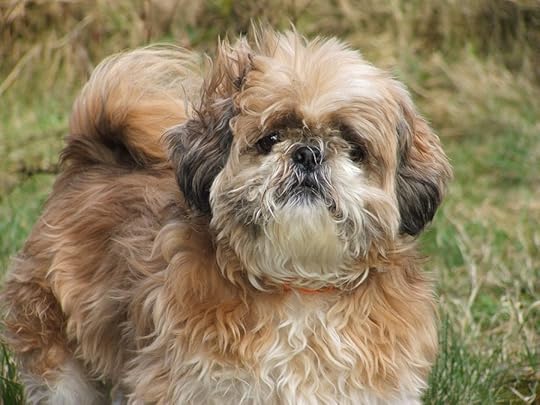
Since ancient times, the Shih Tzu were known for the qualities of being good companions to wise monks. Its sweetness and affection is a positive point, especially when it comes to company with older people.
If the elderly live in an apartment, this is the right breed, as it adapts perfectly to small environments, likes Keeping calm in a stressful environment, as well as interacting well with others
The Shih Tzu does not need to go out for walks, light activities indoors are enough for him to stay in shape. In addition, he really likes to be held, ideal for seniors who like this affection.
4 – Yorkshire

Small, fluffy and adapts easily to small spaces, so it is perfect for seniors who enjoy walking with their dog and also live in small spaces.
This breed is very docile and has patience, she doesn’t usually bark and get angry.
5 – Maltese

He is called a “lap dog”, he is small and one of the best companions, as he is inseparable from his owner. He doesn’t like to be alone under any circumstances.
The advantage of this breed is that it adapts to its owner’s lifestyle, it is kind, sociable and affectionate. Despite its size, it is a very attentive little dog with noises.
How to define the best companion dog for seniors?The first step is to assess the lifestyle of the elderly person, whether he is calmer and likes to stay at home or prefers to go out, do physical activity and have other occupations.
If the elderly person is the quieter type and prefers to stay at home, just going out for a walk, the best dogs are those that easily adapt to their owner’s routine, as is the example of the Maltese, Chihuahua, Pug and Shin Tzu .
Now, if the person prefers to practice physical activity every day, walk around the neighborhood a lot and likes to go out, then the choice should focus on a more energetic puppy like the Beagle.
Another fundamental point that needs to be evaluated is whether the elderly person lives in an apartment, if the answer is yes, then the Yorkshire, Maltese, Boston Terrier and Shin Tzu are excellent choices.
However, if you live in a house, you can include the Schnauzer and Cocker breed dogs in the list , they are small in size, but need more physical activity.
Whatever the choice, the elderly have a lot to gain from a puppy, especially love, company and affection that can change their way of looking at life.
The post Best Dog Breeds for Seniors: What Are They? How to choose? appeared first on John's Blog.
March 16, 2023
Best Dog Breeds for Kids: What Are They? How to choose?
Dogs are considered man’s best friend. And, when they grow up next to a child, this friendship is strengthened even more. But when choosing a dog when you have a child at home, care is redoubled.
There are the best dog breeds for kids. These breeds accept little ones and are very fond of playing. When it comes time to choose your new housemate, keep these tips in mind!
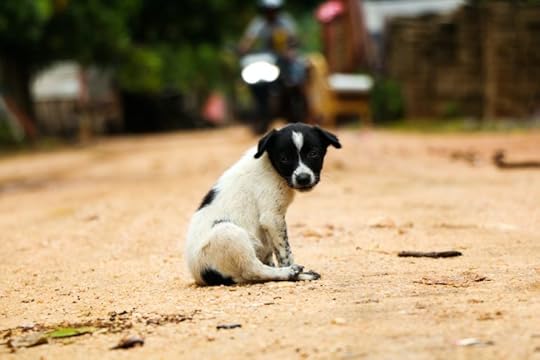
Children have a lot of energy to burn, so it’s pretty cool if the little animal is able to accompany the little one in his antics.
Before proceeding with the list, know that it is necessary to cross all the information to find the ideal dog. If you live in an apartment or house, if you have enough space or if you still have quality time every day with the animal. Some need more space than others, as well as attention.
Generally, the best breeds for children are:
English bulldog;Beagle;Bull terrier;Collie;Poodle;Labrador retriever ;Golden retriever;Pug ;Shih tzu;Vizla;Mutt or SRD (No defined breed).How to choose a dog for a childYou will know the ideal dog breed for a child when you know exactly what you need. Take into account some important points, such as your child’s age. Generally, around 4 or 5 years old, the child is already able to even help with the care of the new friend, such as feeding him.
The space you have also influences the breed. In small houses or apartments, where the puppy will spend more time indoors, calmer and smaller breeds are ideal. If your house is large with a small backyard, you can bet on the medium or large size. Or, if the backyard is very large and with plenty of space, adopt a large animal without fear!
The size of the dog does not influence contact with the child, because what really needs to be taken into account is the personality and behavior of the breed.
Ideal breed for apartment with childrenThe reduced space calls for small dogs, which are calm but at the same time playful with children.
Pug is one of the most recommended for this scenario. It is a small breed, likes children, company and playing. However, due to his breathing problems, he doesn’t have much energy. Which is good for those who live in an apartment and don’t have that much space.
The English bulldog, despite being a more corpulent dog, is also good for those who live in reduced spaces. Precisely because of the shape of his body, he cannot run and play for so long. For this reason the apartment will not be a hindrance for him. On the other hand, he loves company and especially children!
A small breed that is also a good companion for children is the Chihuahua. Small and super affectionate animal with its owners!
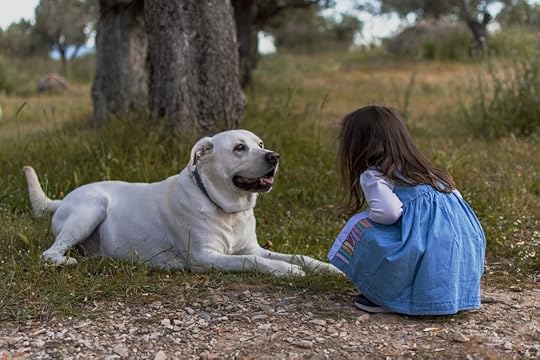
Some large breeds cause fright and surprise due to their size. However, most are loving and love children! Not to mention that they love to run and play in the backyard. For this reason, large dogs are recommended to live in environments that have a little space to run. Taking them for a walk is also essential.
Among the large breeds that love children, the Labrador Retriever stands out. This is an extremely playful breed that loves a mess. A good example of his behavior can be seen in the movie or book “Marley and Me”. Labradors are very sociable, intelligent, reliable and very mischievous! If you have plenty of room and a child with a lot of energy, bet on the Labrador.
The collie is also a well-known breed in the movies through Lassie. This dog is also sociable, but it is well-mannered and obedient. It’s easy to train a collie dog, making it an excellent companion for children! In addition to playing and being friends, it will be a guard dog for the little one.
Is it recommended a mutt for a child?Stray dogs are a box of surprises. No one knows for sure the mix of breeds for that specific animal to be born. Therefore, it is practically impossible to know what his personality is like or even how big he will be!
However, they are extremely loving, especially when they grow up with their little companions. If you choose to adopt an abandoned animal, of no defined breed, prefer puppies, because when they grow up with the children they become great friends.
The post Best Dog Breeds for Kids: What Are They? How to choose? appeared first on John's Blog.
Be your dog’s leader – A very healthy attitude
If you have one piece of advice we can give to dog tutors, it is: be your dog’s leader. This is a strategy that works very well for anyone looking for a more balanced, respectful and, above all, happy dog.
Know that controlling a dog’s attitudes can become something extremely difficult when not done in the right way and at the right time. Therefore, dedicate time to this aspect and ensure that your animal’s days are lighter. Follow the text to understand more about it.
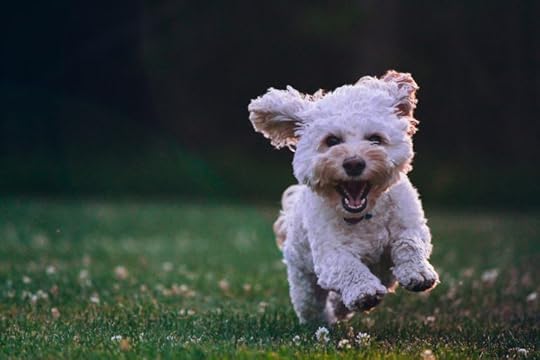
As previously mentioned, be your dog’s leader. No boss. But yes, leader. This is one of the most basic premises that a puppy seeks to find when he arrives at a new home. If he fails to perceive control and administration, he himself will feel empowered to do whatever he wants. And this can be disastrous, especially if you expect the dog to be obedient.
It is not an easy task and requires a lot of patience from tutors. Especially the first-timers. That is, you need to understand that, although there is indeed a way to become your dog’s leader, some time will need to be invested in this, until he realizes who is responsible for who. And that takes confidence, training and, above all, a lot of love. Keep reading to understand how the dog behaves in its natural instinct.
How does a dog behave?A dog behaves nothing less than like an animal. And we all know that animals have instincts that make them go one way or the other. And one of the most present instincts in any dog is precisely the sense of leadership. When the dog arrives at a new home, he soon associates people close to him as members of the new pack. And in this way, he hopes that someone will take control of the situation.
Taking control of the situation is imposing limits, showing what you can, what you cannot, stipulating times and places to eat, etc. When there is no such sensation, that is, when the dog realizes that this figure does not exist as it should if it lived in the woods, it will instinctively take matters into its own hands.
And that means, among other things, being aggressive, possessive, rude and disrespectful to family members. As much as he doesn’t do it “for harm”, his instinct will be to lead, if no one leads him. And it is precisely at this point that his figure as a tutor must come into play. He needs to know that you own him and, in this way, guide the reins.
What is a leader?Many people get confused between leader and boss. The leader is the one who will guide the steps of the followers, and the boss will be in charge. In short, we can easily associate these situations with canine behavior. We cannot get attached to the simple fact that we own them and, in this way, command and dismantle a series of situations that they do not even understand.
The leadership process is simple, but not easy. And he needs to be done the right way so that the dog doesn’t associate his figure with something he’s afraid of or terrified of. But yes, respect. A practical example of this is, instead of fighting when he does something wrong, praise him when he does something right. Dogs are conditioned to situations. And it is our responsibility to condition them for positive situations. And so they can make the association in the future. Be your dog’s leader and be effective in this step!
Training is the key to good behaviorYou must have heard about dog training , right? Well, this is a method that many people simply find inaccessible or commonplace. However, it is extremely important to be able to lead your dog. Through strategic and thoughtful processes, we can create situations so that the dog learns, is polite and respectful, in accordance with our realities.
Therefore, a practical example of this situation is teaching your dog to control himself in situations where you are not present. When you get home, the recommendation of several trainers is that you should not interact with the dog. Let him play pranks and only after a few minutes pay attention.
This is a way of demonstrating that you are in the lead and will only pay attention when he behaves. Over time, he will condition himself to this and he will be a much less anxious dog. Be your dog’s leader and watch this process happen little by little.
Setting boundaries is keyA leader sets limits intelligently. He doesn’t fight, he doesn’t change and much less orders. However, he creates artifices so that the dog understands what is right and what is wrong. For example, if the dog does its needs in the wrong place, you shouldn’t fight with it, let alone make it smell its needs, rubbing its muzzle in the place (yes, there are people who do that!).
What you need to do is somehow condition him to do it right. For example, every time he hits the pee spot, praise him and offer him a prize. So he will understand that when he does a certain action, something positive happens.
Beware of the tone of voiceTone of voice is something that dogs take very seriously. Fighting is not healthy. While watchwords, strong and short, yes, they can have an effect in the long term. A “no!” well expressed, quickly and briefly can be a command very well absorbed over time. However, exaggerated cursing and sermons will hardly be picked up. And you’ll only make the dog even more anxious. So pay attention to this situation.
Reasons to lead your dogFinally, we separate a series of reasons to lead your dog and not be his boss. Show who’s in charge, but don’t abuse power, strength or your intelligence. Give the dog time, make him feel loved and never use force or violence. The rest will happen over time and you will notice the differences.
However, it is important to always keep in mind that the dog is still a dog and not a machine. Therefore, he deserves some time to assimilate everything that is happening and, in this way, respect you. See a list of positive situations that planned leadership can offer and thus be your dog’s leader.
Elevation of immunity because he feels happier;Much more serenity with other people (postmen, for example);Lack of motivation to hurt family members;Much more respect is gained during walks (don’t pull the leash, for example);He will play much more with his own toys than with inappropriate objects;Control of anxiety and irritation by being able to stay at home;The post Be your dog’s leader – A very healthy attitude appeared first on John's Blog.
Apartment dog: 5 breeds that easily adapt to the environment
Many tutors are in doubt as to which dogs adapt better to apartments, after all, the space for the pet is more restricted, which may cause discomfort for some breeds, especially the large ones. Therefore, before opting for the dog of your choice, it is necessary to think about the quality of life that he will have in the place.
Dogs with less energy to burn tend to adapt more easily to smaller environments without compromising their physical and mental well-being. With that in mind, we have prepared a list of five small apartment dog breeds. Check out!
PoodleThe poodle is one of the most common dog breeds in Pak and an excellent choice for those who live in an apartment, either alone or with more people in the home.
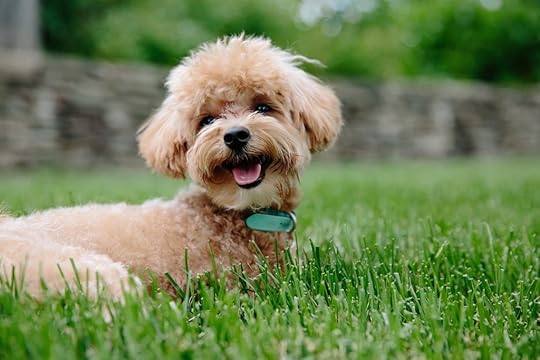
He is popularly known for being intelligent, faithful, docile and obedient, getting along well with other dogs, cats and unknown people. He also likes to expend energy during the day. Therefore, it is important to organize a routine of walks and exercises, to prevent the pet from getting bored or stressed .
It is worth mentioning that the breed presents a great diversity of sizes. If you choose a Poodle to live in an apartment, give preference to a small or miniature one.
German Spitz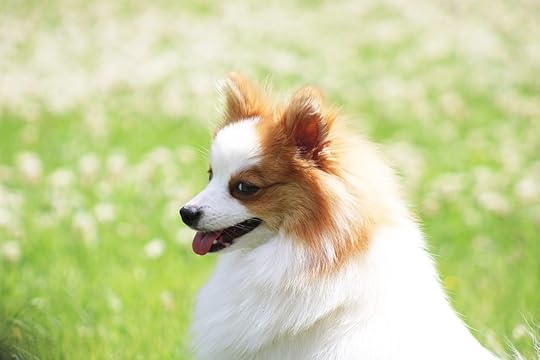 The German Spitz, better known as the Pomeranian, is one of the smallest dogs of the Spitz breed and a great companion for adults and elderly people who live in apartments.
The German Spitz, better known as the Pomeranian, is one of the smallest dogs of the Spitz breed and a great companion for adults and elderly people who live in apartments.
Because he was created to be a pet, he is usually docile and very attached to his tutors. However, he has difficulty dealing with loneliness and, therefore, may suffer from separation anxiety when left alone for long periods.
The main health tips to ensure their well-being are: daily exercise and dog training, so that possessiveness is treated correctly and anxiety is reduced.
DachschundThe Dachshund, famous sausage dog, is a breed that adapts well to apartments, as long as you don’t need to go up or down stairs frequently, as movements can cause damage to the pet’s back and neck.

The Dachshund is a kind, lively and playful dog that gets along well with both children and the elderly. However, like the German Spitz, he can develop separation anxiety if left alone for too long.
Over the years, he may experience spinal problems due to his body structure. Therefore, it is important to invest in walks and physical exercises, to ensure that the pet’s physical health is always up to date.
Maltese BichonThe Bichon Maltese is a breed of apartment dog that is very pleasant and affectionate with its tutors and tutors, adapting easily to their routines. It is highly recommended for those who live in small places and for emotional support.
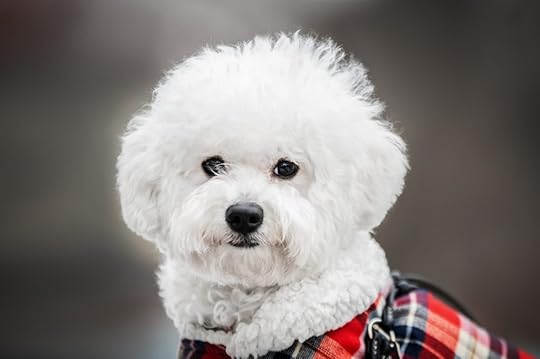
Despite being a busy pet, he has a tendency to obesity due to his slow metabolism. Therefore, when living with a Maltese, it is essential to create a physical activity routine and ensure a balanced and healthy diet , without exaggerating the amount of food.
PugMuch sought after by families, the Pug breed is also an excellent option for those looking for a dog to raise in an apartment. The breed has Chinese origins and was bred to keep company with nobility and Buddhist monks.
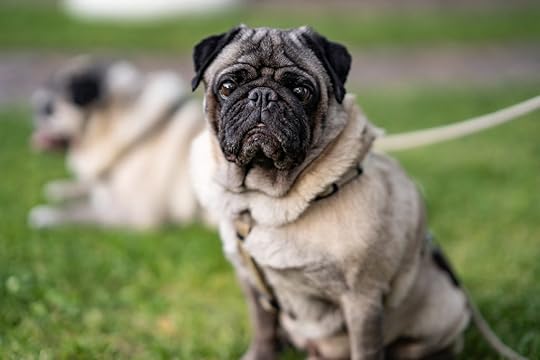
He is well known for being docile, sociable, playful and attached to people. In addition, it does not need a lot of space to live well and is usually calm, great for those who live in small apartments and to maintain good relations with the neighborhood.
However, it is worth noting that, as a Pug breed, this is a brachycephalic dog. That is, he has a pathological condition that combines a number of problems in the upper airways. Therefore, it is important to pay attention to some special points, especially with regard to maintaining body temperature and eating. Click here and check out our article on brachycephalic dog care.
The post Apartment dog: 5 breeds that easily adapt to the environment appeared first on John's Blog.
All about dog’s health guide
Taking care of a dog requires a lot of attention, from birth to old age. Therefore, it is essential that tutors are always aware of the animal’s health, so that it enjoys a long, comfortable and healthy life.
Thinking about it, we highlight five dog health care that are indispensable in everyday life and at all stages of life. Check out:
VaccinationDog vaccines are one of the main health care you need to be concerned about. In addition to some being mandatory, such as the anti-rabies vaccine, they are essential to prevent infections and ensure the well-being of the animal and all the people with whom it has contact. After all, several diseases, such as leptospirosis and canine rabies, can be transmitted to humans.
Currently, the animal vaccination card is also an essential item for tutors who plan to stay in hotels or board planes with their dogs.
Below, you can see a list of the main vaccines for dogs and the recommended period for applying each one:
Polyvalent vaccine (V8 or V10): from 6 weeks;Canine flu vaccine: from 8 weeks;Giardiasis vaccine: from 8 weeks;Anti-rabies vaccine: from 12 weeks.If you have a rescued dog with no history of vaccinations, take it to a veterinary hospital and consult a professional to find out which procedure should be performed.
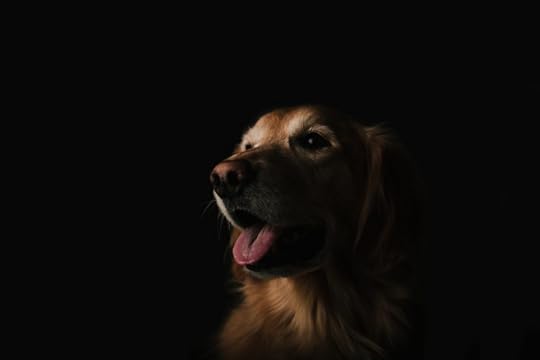
Another essential care for animal health is castration. In addition to preventing unwanted reproduction, the operation contributes to the well-being and life expectancy of the dog, preventing serious diseases such as breast or prostate cancer.
Castration of the dog also facilitates coexistence, as it ceases – or decreases – the habit of marking territory and aggressiveness. In the case of females, the surgery also avoids a psychological pregnancy.
To find out the best period for neutering the dog, talk to a trusted veterinarian and perform the necessary tests to find out if your dog is in good health and if it has any restrictions for the surgery.
FoodAs we always point out, food is one of the main care we need to have with the dog. With a balanced and complete diet, you guarantee the necessary amount of nutrients, minerals and vitamins for dogs to maintain the proper functioning of the body..
HygieneHygiene is also fundamental to canine health. Let’s start with the bath: with frequent cleaning, we prevent the accumulation of subjects that can cause infections. In addition, this moment is essential so that you can examine the dog’s body and make sure that there are no fleas, ticks or wounds .
Hair brushing is also essential. With it, you avoid the creation of knots, tangles, accumulation of subject and parasite infestation. As for oral hygiene, attention must be paid to tartar, oral diseases and bacteria. For this, ensure a dog-specific toothbrush and toothpaste.
When we talk about hygiene, we also need to think about feeders, drinkers and other items used by the dog. Therefore, remember to clean the containers of
food and water daily after use. Always wash with neutral detergent and rinse with plenty of water to ensure that there are no traces of chemical products.
Physical activitiesLastly, we have practice exercises. By creating an activity routine, you avoid various health complications, both physical and psychological. The main benefits are:
Reduction of stress , boredom and anxiety;Prevention of obesity, diabetes and other diseases;Relief of pain in bones, muscles and joints.By incorporating these health tips into your dog grooming routine, you can ensure that your dog lives a healthy and contented life with you, as well as increasing its life expectancy.
The post All about dog’s health guide appeared first on John's Blog.
Dog care: 07 health tips for your dog to live longer
The life expectancy of dogs revolves around 13 years. However, there are several simple everyday health tips that can help you live longer and with great quality of life. Next, check out 07 dog care you need to have so that your friend enjoys a long and prosperous life by your side!
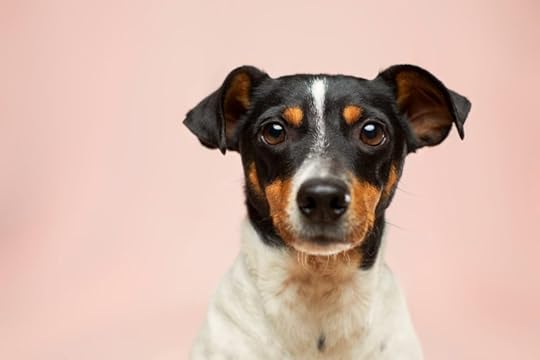
By organizing the pet’s routine with physical exercises, you contribute to strengthening musculature and relieving stress , boredom and anxiety. Large or restless dogs need more intense activity, while small or quiet ones require lighter exercise. In any case, daily walks are essential for physical and mental health.
They are a great way to distract dogs and offer a more enjoyable and sociable life. Contact with external environments contributes to the learning of animals. After all, these are the moments when he can use innate abilities and explore his senses, feeling different smells, hearing distant sounds and having contact with grass and earth, for example.
So that he makes the most of the experience, try to leave the house at milder times, without too much sun or cold. Also observe your dog’s disposition: when you notice that he is panting, drooling or refusing to walk, stop for a rest or go home.
Do not walk without a leashWhen walking in parks, it is common to find several dogs playing without a leash, but this is a dangerous practice and should not be followed. When walking free, the dog is exposed to fights with other animals, escapes and risks of disappearance or accidents, especially if he is near busy streets and with many cars.
The best way to avoid the dangers of the external environment is to always walk around with a collar and, preferably, with an identification pendant that presents your name and telephone number. That way, if something unexpected happens, you’ll have more chances to find your friend again.
Let the dog rest Just like physical activity, rest is also essential to keep the dog healthy. A dog’s sleep impacts all daytime activities and is the best way to relax and replenish energy. It is also at this time that the
immune system reaches its greatest performance to protect the organism. With that in mind, offer a quiet and peaceful environment so that your pet can rest and have some time just for him, without bothering him.
Daily cleaning of the house prevents the ingestion of toxins and harmful substances, which can cause allergies and serious illnesses, such as poisoning. It’s also important to clean up the waste quickly to avoid the proliferation of flies and bacteria in the area.
Avoid smoking around the dogEven if inhaling indirectly, pets cannot eliminate the toxins that reach their lungs through cigarette smoke. In addition to affecting the respiratory system, cigarettes can still cause serious skin infections and allergies, which usually cause excessive hair loss, itching and wounds throughout the body.
If quitting smoking is not an option, the ideal is to avoid smoking in areas where the pet has access, even if it is outdoors.
Invest in a balanced and healthy dietHealthy food for dogs is essential to maintain the functioning of the body and the health of bones, hair and skin. For this, it is recommended to establish a defined meal routine. That way, you ensure that your pet is always fed and without exaggeration.
Overeating can lead to obesity. In addition to reducing life expectancy, it can cause various diseases and make locomotion difficult. To avoid the risk of becoming overweight, choose the right food for your dog’s age, size and physical condition. If in doubt, consult an expert.
Also, remember to offer quality and complete food, with all the nutrients, vitamins and minerals needed for a life full of energy and disposition.
Take care of oral healthA good mouth cleaning prevents several health problems, such as bacterial plates, tartar and gingivitis. Although they seem common, these setbacks can evolve into more serious cases, such as periodontal disease, a bacterial infection that can affect the organs if the bacteria enters the bloodstream.
Dry food is a great ally for oral hygiene, as chewing helps reduce the amount of tartar on the teeth. However, this is not enough to completely remove the calcification. To keep your mouth always clean, brush your dog’s teeth at least once a day, with toothpaste made for dogs. If he’s not used to cleaning, start slowly, in quieter times.
The sooner you create the habit, the easier it will be for him to adapt.
When noticing that your pet has recurrent breath, yellow teeth or any anomaly in the mouth area, consult a trusted veterinarian.
Visit the veterinary hospital regularlyTrips to the veterinary hospital are also essential to ensure that your pet lives longer. By carrying out regular visits, you increase the chances of detecting complications at an early stage and, consequently, of treating them as soon as possible. In addition, consultations are great opportunities to clarify everyday doubts.
For puppies and senior dogs, it is recommended to make between two and four visits a year, as in these stages the dog needs special care. For adult dogs, one or two visits a year is enough. In any case, when noticing any atypical behavior or symptoms of the main dog diseases , consult a trusted veterinarian as soon as possible.
The post Dog care: 07 health tips for your dog to live longer appeared first on John's Blog.
September 26, 2021
Nevertheless, We Persist
 Art by Juan Gimenez
Art by Juan GimenezFinally finished the new novel today and sent it off to my agent. It’s been a labor of love for the past year, with most of the intense writing happening over the past three months. It’s always a great feeling to finish a novel and get it off your plate.
I imagine it’s quite like giving birth after nine months of carrying a baby–you love it, you’ve taken great pains to do everything just right, but now you have to get that thing out of you before you go freakin’ nuts. So it’s great to have TIMES NEVER CHANGE out of my system at last.
The novel I wrote last year, IMMACULATE SCOUNDRELS, still hasn’t found a publisher. It may never find one. Such is life. So we keep on rolling with the new book, which serves as a fresh start into the same universe as the first book. However, nobody will ever need to read the first book to enjoy the second one. In fact, if SCOUNDRELS fails to sell (as it probably has), then TIMES becomes the new First Book of the Scaleborn Series.
The world I’ve dreamed up here is a blend of Asian and Roman influences, but it’s a fantasy world with no direct relation to our own world–except perhaps in the themes that it explores. I don’t want to say too much about it for fear of spoilers, but suffice it to say that it has tons of action, sorcery, and the whole saga spins out from two complex characters who have never met one another.
It’s a world where sorcerers live for a thousand years but still have the same problems as those who live normal lifespans. It’s a world of supernatural forces, nature spirits, eldritch demons, and flashing blades. I also hope that it’s a world I’ll be able to share with you soon. But that’s up to the skills of my fantastic agent and the wisdom of established book publishers.
In the worst-case scenario neither of these books sell. In that case, it’s back to the drawing board next summer for some brand-new concepts. Who knows? Maybe I’ll write a play next time instead of a novel. The possibilities are endless…
Peace!
John
 Art by Frank Frazetta
Art by Frank Frazetta



